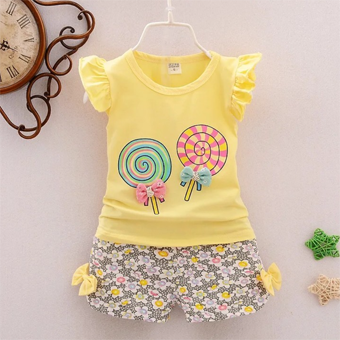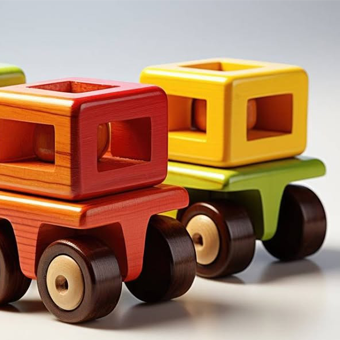Managing kids’ behaviour when they come home from dad’s house


Moving between homes on a regular basis would be unsettling for even the most well-adjusted adults. For children who need routine, stability and a sense of safety above all else, the idea of frequently moving across two homes is usually daunting and overwhelming, even when they don’t express it. Is it any wonder that managing kids’ behaviour when they come home from dad’s house can be challenging?
They worry about forgetting things in the move, not having access to all of their possessions when they need or want them and having limited exposure to their other parent if something occurs.
The facts are, that this reality needs to be validated and acknowledged for all children who live across two homes.
The key is to show a huge amount of empathy, forward planning and insight in order to minimise the disruption felt by your child/ren. As well as creating a smoother transition between homes, irrespective of how often the move occurs or how long the stay will be.
The level of animosity between ex partners will play a part in the child’s experience of the transition from one home to the next. And of course, 2020 has seen COVID-19 restrictions add further complications to an already difficult situation. Every family dynamic is different, and each co-parenting case is different.
However, there are some simple yet effective ways to help kids of all ages and stages ensure a smoother transition as they move from one home to another, regardless of the specific circumstances at play.
Managing kids behaviour when they come home from dad’s house
Empathy and validation
Many parents have concerns about the change in temperament they see in their children upon return from a visit to their ex. While this can be difficult to parent through and manage, it is essential to understand where these emotions are coming from.
They are often coming from a genuine desire that things were different, a feeling of being displaced or unsettled and a sadness that their time with their dad has finished. (This can often be the case when dad is the parent they spend less time with).
No matter your feelings towards your ex, empathy for your child or children is key in helping them settle in from one home to the next. Understanding that this transition is challenging helps parents to allow their child some grace, as they adjust again to your home.
Children may act out upon coming home from Dad’s, test your boundaries, intentionally break house rules or use language or actions that they know will provoke you. This is all a part of a child seeking safety and wanting reassurance from you, their parent, that they are safe despite the upheaval they feel from moving from one home where they have felt settled to a new environment again.
Allow your child/ren the chance to talk to you about how they are feeling and make sure they know it is ok to tell you they are feeling sad/anxious/regretful etc. Make it clear that you know they aren’t feeling the best when you see these behaviours, and ask if there is anything you can do to help them or that would make them feel better.
In addition, children may express through their words or behaviour that they miss their other parent. Validating your child’s feelings and reassuring them that they will see their other parent in a few days, or via Facetime or phone in the meantime, will help your child feel less abandoned and reassured that both parents still love and care for them.
Communication with the parent they have just left
One of the issues that is a common cause for concern for children of all ages is how much and when they will be able to connect with and be involved with the parent they have just left.
Whilst for some children, the custody arrangement is something they get used to and are happy to work around, for others, they are left wanting more and this can lead to bad moods, resentment and even tears when they return to their primary home.
For older children who have devices, this is something that can be navigated with behaviour agreements around how much phone time they can have and you can monitor how much time is spent on the phone to dad.
For younger ones, it can be helpful to set up an additional time between visits that they can speak to them. One idea could be for dad to read a five minute bedtime story over the phone to your child when they are staying with you.
Of course, putting a time limit on this conversation with their Dad may be necessary especially if you are expected to set up the phone call and this would cause you animosity or resentment. If this is the case for you, it could be worth considering if someone else can supervise that time in order that your child receives the connection they are missing.
Whatever you decide, from open communication as they wish at one end and no contact at all at the other it is important your child understands what your arrangement is. By explaining to your child in practical terms what, when and how they can expect to speak to their Dad, you give your child a sense of control over their own situation. This will also help them to feel secure and connected to both parents no matter who’s house they are living in.
Other ways to promote this connection can be to allow pictures of Dad by your child’s bed or to allow them to invite Dad to school events etc even if they don’t usually chat when at your home.
Rituals around transition
One way to help children understand that it’s time to move from one home to the next is to create some consistent rituals or routines. This allows children to learn through repetition that they can rely on consistent ‘signals’ to mark the move and help them to adjust to the other parents home.
Try finding a simple ritual that you can commit to and follow through each time you pick your child up from their father’s house. This would need to be something out of the ordinary, that only happens at the point of pick up from their other parent’s house. It could be:
- Picking up takeaway dinner on the way home
- Going through a drive through for a treat
- Or listening to a certain song in the car together
This consistent action on the way back from Dad’s house will help to mark the transition for your child and give them closure as one home experience ends and another one begins.
A second way to mark and assist the transition between homes for your child is to allow them downtime. This would mean that for the first 30-45 minutes when they arrive back to your house, you allow them to be in their own space with an activity of their choice and they are not automatically expected to jump back into the fast paced life we all live!
This time and space where they are not bombarded with questions, conversation or activities can help them to process the transition and think through their time at their other parent’s home. It is much like processing through their school day before talking about it and will help them to make the mental shift from one home environment to the other.
Managing kids’ behaviour when they come home from Dad’s house (cont.)
Family time
Following some down time, the sooner that you can do something as a family together, the better.
This activity should include the whole family unit as it looks at your home (including pets)! The aim is to re-cement the bond and feelings of belonging that can be associated with your home.
Some ideas are:
- Having a meal together which your child helps to prepare
- Having a reading session where everyone gets to choose a book (for younger children)
- Playing a game that everyone enjoys
- Having a movie night on the couch.
Another idea is to also ensure that on that first night, each of your children who has just returned home, spends some one-on-one time with you. This time can be doing what is already in the routine such as having a bath, or bedtime stories or can be more of a ritual/treat i.e. coming to the shops with you as a special outing.
These acts of togetherness will likely help your child to feel safe, assured and settled in their new home environment more quickly.
Visual schedules and calendars
Depending on the age of your child/ren, it can be hard for them to grasp when they are supposed to be with which parent and for how long. It is also something that parents with split custody arrangements work hard to keep track of as well.
Therefore, it is helpful for children to have a way to reference and know with certainty when they will be moving next. This helps them to feel more relaxed and alleviates anxiety around knowing what is coming next.
A visual schedule on the wall, showing clearly which days the child will be with Mum and which days with Dad, can be very helpful in easing anxiety of the unknown.
Explaining to children what days they will be with who, who will be collecting them from school when and who will be attending different school or life events, can help children feel more in control of their lives.
Conclusion: Managing kids’ behaviour when they come home from dad’s house
By creating some of these rituals, children begin to feel a better sense of consistency each time which is key to alleviating feelings of worry and being unsettled.
Knowing that you are approachable, open and understanding to their relationship with their father will also help minimise their feelings of guilt at having had a nice time and not wanting to talk to you about it in case it makes you sad!
But no matter what, if during the transition period, your child feels consistently loved, advocated for and supported by both parents, the turbulence that can be caused for everyone with the regular moves can be minimised.
I hope these suggestions will help to minimise the stress in your family when your child comes home from dad’s house.
















Leave a comment